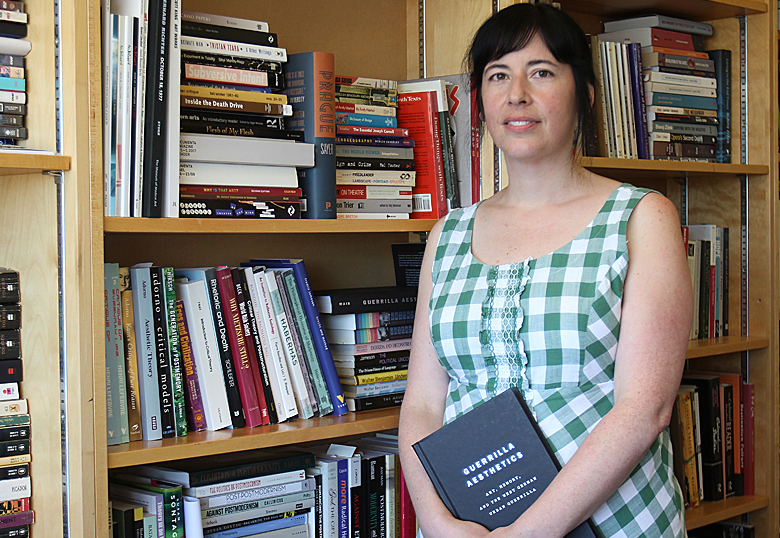Most scholarship on the Red Army Faction looks at the possible political strategies behind the group’s actions but Dr. Kimberly Mair, a University of Lethbridge sociology professor, takes a different approach in her new book Guerrilla Aesthetics.
Mair focuses on the Red Decade, 1967 to 1977, in West German history. The decade saw widespread protest in many countries but the Red Army Faction (RAF), or Baader-Meinhof gang, is one of the best known. Urban guerrilla cells emerged out of youth and student movements at the time in protest of capitalist imperialism.

“I’m fascinated by the political and politics taking a form that I did not observe in my youth,” she says. “I was also motivated by theoretical interests and am really interested in forms of communication, particularly indirect communication. I’m much more interested in how things are said or how things are written than what the content is.”
The book grew out of Mair’s research for her doctoral dissertation and she consulted popular culture sources and grey literature, or materials authored by RAF members. The members produced a lot of writing, both before and after they were incarcerated. They followed an avant-garde style of communication designed to undermine language conventions. Urban guerrillas saw language as a form of violence and social coercion and determined they had to break the rules in order to communicate.
“What I argue is they weren’t trying to send a singular message even though the content may suggest that they were,” says Mair. “I think they were primarily concerned with subverting social norms and, in fact, undoing their own consciousness as members of their particular society.”
They were the generation born after the Second World War in Germany when the history they learned in school stopped at the 1920s and 1930s. They later learned about Auschwitz and that some people occupying official positions in West Germany had been members of Hitler’s SS. They came to distrust their parents’ generation, the establishment and the culture, and wanted to remove themselves from their own cultural learnings.
“In a sense, they tried to exit everything, such as the norms of grammar and the contours of ethics they understood to be grounded in the larger community,” says Mair.
Early on, their writings may have used language in a more instrumentally rational way but their communications began taking more unusual forms when they were incarcerated. Some of the imprisoned members experienced strange conditions, such as being in a fluorescent-lit cell for 24 hours a day or being in a cell where no sounds penetrated.
Mair uses the concept of emplacement, or the relationship between body, mind and surrounding space, to describe how urban guerrillas communicated. She makes the case that the guerrillas’ adoption of the avant-garde was a rejection of rationality and that guerrilla aesthetics was marked by communications that weren’t message driven but tried to draw new relationships or produce a different kind of consciousness.
